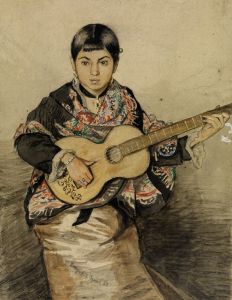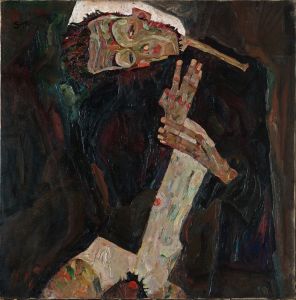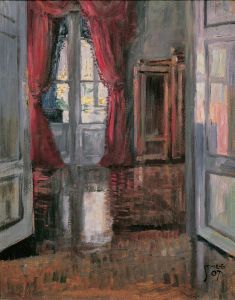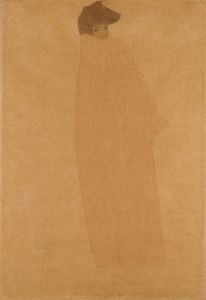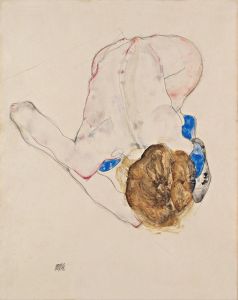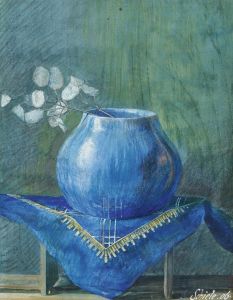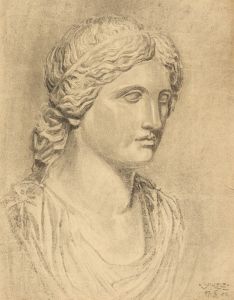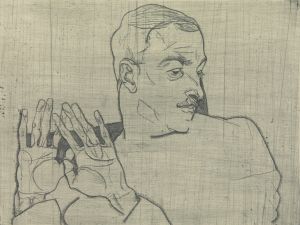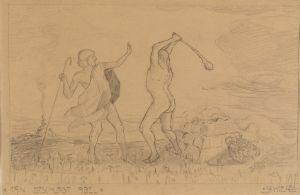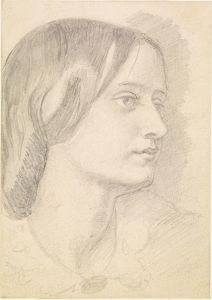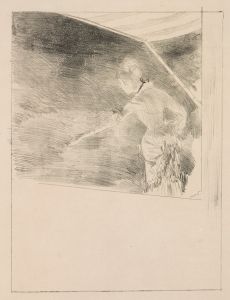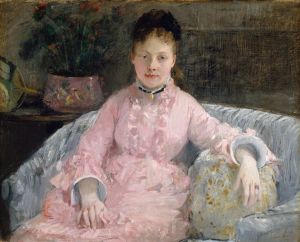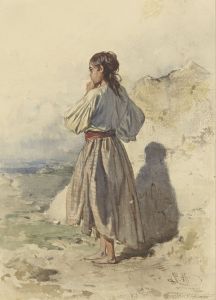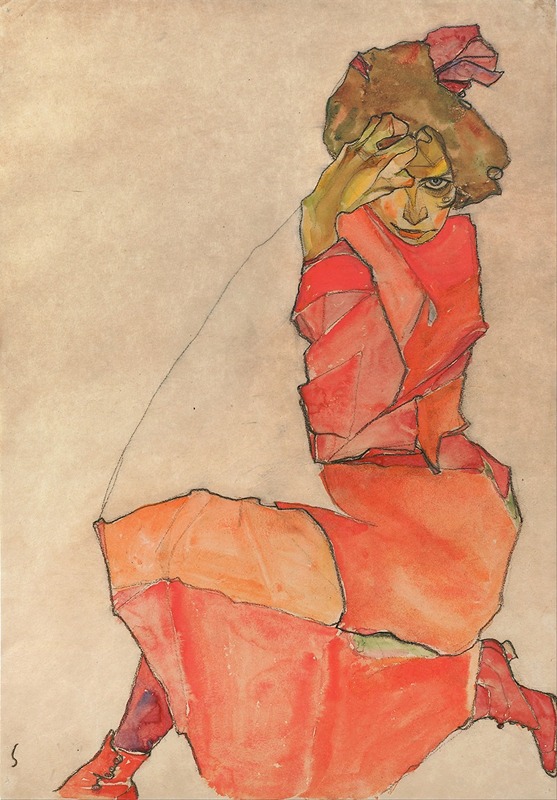
Kneeling Female in Orange-Red Dress
A hand-painted replica of Egon Schiele’s masterpiece Kneeling Female in Orange-Red Dress, meticulously crafted by professional artists to capture the true essence of the original. Each piece is created with museum-quality canvas and rare mineral pigments, carefully painted by experienced artists with delicate brushstrokes and rich, layered colors to perfectly recreate the texture of the original artwork. Unlike machine-printed reproductions, this hand-painted version brings the painting to life, infused with the artist’s emotions and skill in every stroke. Whether for personal collection or home decoration, it instantly elevates the artistic atmosphere of any space.
"Kneeling Female in Orange-Red Dress" is a notable watercolor and gouache painting created by the Austrian artist Egon Schiele in 1910. Schiele, born on June 12, 1890, in Tulln an der Donau, Austria, was a protégé of Gustav Klimt and is renowned for his distinctive style and contribution to the Expressionist movement. His works are characterized by their raw emotional intensity, bold lines, and often provocative subject matter.
This particular painting, "Kneeling Female in Orange-Red Dress," exemplifies Schiele's unique approach to the human form and his ability to convey complex psychological states through his art. The painting features a female figure kneeling, adorned in a vibrant orange-red dress that contrasts sharply with the more muted background. The use of color in this piece is particularly striking, with the orange-red dress drawing immediate attention and highlighting the figure's form.
Schiele's technique in this painting involves the use of watercolor and gouache, mediums that allow for a fluid and expressive application of color. The figure's pose is somewhat contorted, a common characteristic in Schiele's work, which often explores themes of discomfort and tension. The exaggerated lines and the almost skeletal depiction of the body reflect Schiele's interest in the human anatomy and his ability to convey a sense of vulnerability and introspection.
The emotional intensity of the painting is further emphasized by the figure's facial expression and body language. The woman's face is partially obscured, adding a sense of mystery and inviting viewers to ponder her emotional state. This ambiguity is a hallmark of Schiele's work, as he often leaves much to the interpretation of the viewer.
Egon Schiele's career, though brief, was highly influential. He produced a significant body of work in a short period, as he died at the young age of 28 on October 31, 1918, during the Spanish flu pandemic. Despite his early death, Schiele's impact on the art world was profound, and his works continue to be celebrated for their emotional depth and innovative style.
"Kneeling Female in Orange-Red Dress" is a testament to Schiele's mastery of form, color, and emotional expression. It is housed in various private collections and museums, reflecting its importance and the enduring interest in Schiele's work. The painting remains a powerful example of early 20th-century Expressionism and continues to captivate audiences with its bold depiction of the human condition.





